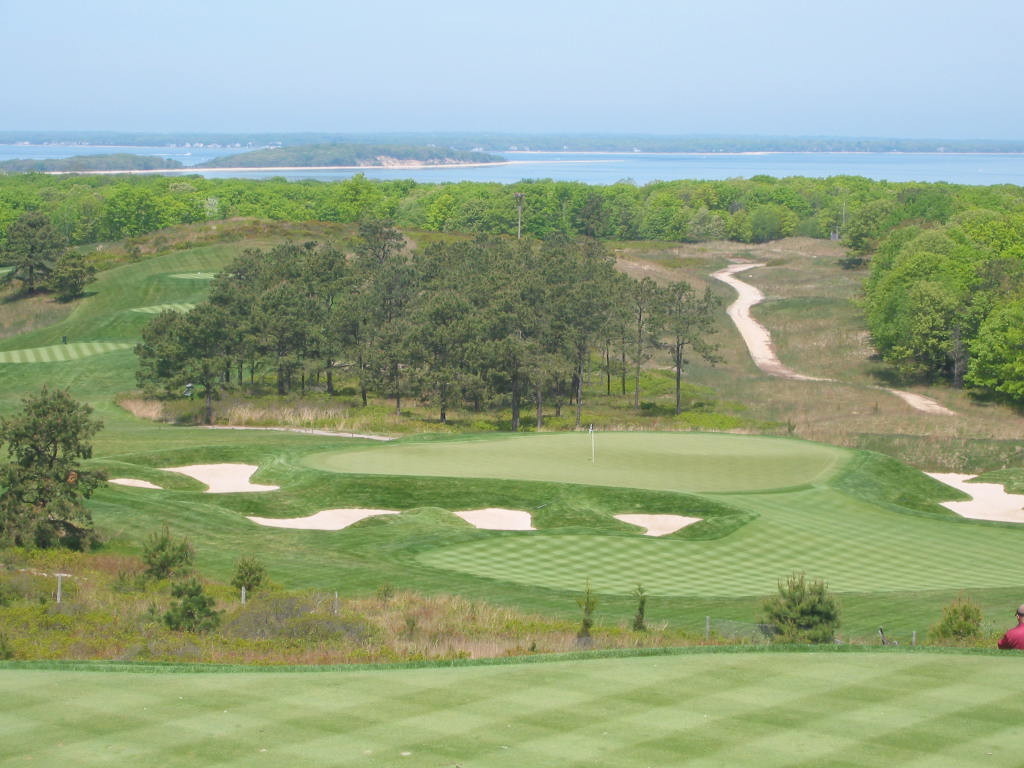
History continued...
Bridgehampton, saved by environmentalists and racers and Ol’ Blue Eyes
The racers were saved by the bell when this initial proposal was defeated by Friends of Bridgehampton and an environmental watchdog called the Group for the South Fork, which fights to preserve open space in the face of rampant overdevelopment. Thanks to extensive local press coverage afforded by Nissan driver and Academy Award winner Paul Newman, condominium developer Carol Konner left behind a $300,000 down payment which promptly disappeared into the corporate coffers.
For Bridgehampton’s 25 th anniversary in 1982, Hollywood script writer Ed Spielman crafted this ode to The Bridge:“What is it about places like "The Bridge" that inspire humans to go fast and risk death or crippling injury? It may be a primeval will to win over others or to tame these mechanical beasts. But it's probably the heightened sense of elation that comes from self-mastery, even as one waits on the grid for the green flag to fall.” Even though the racing was no longer world-class, the thrills were for cars and, increasingly motorcycles, which shared the calendar with them.
Early one midsummer morning an angel landed at a Ferrari Club driver's meeting in the form of Robert M. Rubin, a wealthy Wall Street trader and car collector. Our weekly pitch to the congregation of racers to "Save The Bridge" brought a raised hand from Rubin, who turned out to be the most competitive, press-on-regardless kind of guy seen at Bridgehampton in years. He immediately set out to acquire enough shares to tip the balance in favor of racing. After a few months of frenetic proxy collecting, a meeting of the shareholders to vote on the sale of the property was scheduled and Rubin eventually acquired virtually all the remaining shares and became the sole owner of the property.
For several years, Rubin attempted to gain a temporary exemption from the noise restrictions to stage an east coast version of the hugely-popular vintage car racing weekends held annually at California’s Laguna Seca. But he was repeatedly turned away by the Southampton Town Council, which found it more expedient to support housing developers than the track owner.These land speculators had been assuring clientsthat “racing was over” at Bridgehampton, and they needed a guarantee.
 Becoming aware of the politico-developer axis that was ruling Southampton, Rubin suggested that if the government didn't want his racetrack he’d build a golf course and some 40 houses, the choice was theirs. The Town Council opted for golf, ostensibly to rid themselves of those onerous noise complaints. Of course, this brought great joy to developers who owned large tracts of woodlands within earshot of the circuit.
Becoming aware of the politico-developer axis that was ruling Southampton, Rubin suggested that if the government didn't want his racetrack he’d build a golf course and some 40 houses, the choice was theirs. The Town Council opted for golf, ostensibly to rid themselves of those onerous noise complaints. Of course, this brought great joy to developers who owned large tracts of woodlands within earshot of the circuit.
Over 100 area residents protested the plan, many of them demanding a return to racing. For Bridgehampton’s unwavering racing supporters, a new battle had to be enjoined against our erstwhile savior, but our real enemies were the town politicians. Newsday, Long Island’s daily newspaper editorialized that "if the town is foolish enough to favor golf over racing, it'll reap a whirlwind of protest. The Bridgehampton Race Circuit was and could again be a world-class tourist attraction.”
SCCA Regional Director Chris Morales began a personal crusade to ensure that the track remained in presentable condition for amateur club racing, which continued through the 1997 season. Steve Behr, Bob Devol and Peter Klebnikov, early members of the Friends of Bridgehampton, suggested changing our name to Bridgehampton Racing Heritage Group (BRHG) to reflect the legendary importance of the track.
We gained new allies when the same neighbors who had complained about noise began to worry about the impact of a golf course on their drinking water. Depletion of the limited fresh water supply has long been a source of concern for all of Long Island. The racetrack site is a prime recharge area for the greatest volume of fresh water for the entire Hamptons.
Citing the history of polluted wells surrounding the nearby Noyac Golf Club, residents and the Group for the South Fork pointed out that golf course chemicals threatened the drinking water. Bumper stickers - NOISE POLLUTION IS TRANSIENT--WATER POLLUTION IS FOREVER sprouted on cars. In a rare pairing of environmentalists and racers, lawsuits were filed against the golf course plan by the Group for the South Fork and BRHG.
The last lap
After months of sometimes raucous public hearings, which were overwhelmingly anti-golf, the Southampton Town Board chose to ignore the pleadings of local residents and the results of community opinion polls by BRHG. Glib experts from the golf industry arrived armed with polished promises about a "clean golf course" and minimal usage of the precious fresh water supply, Nor did it help that the New York State Office of Historic Preservation notified Southampton Town that the Bridgehampton Race Circuit had been deemed worthy of inclusion on the National Register of Historic Places and was now listed on the State Register. Local government, it turned out, is solely responsible for the protection of historic sites, and we’ve seen how well that works.
In 1998, the Southampton Planning Board approved the golf course and construction of the fairways began in the spring of 1999. The final checkered flag fell at The Bridge. International road racing on Long Island was finished, 95 years after William K. Vanderbilt Jr. first challenged the European automakers in 1904.
Today, The Bridge Golf Course is soliciting memberships at several hundred thousand dollars each. To his credit, owner Bob Rubin has worked hard to celebrate the unique history of the Bridgehampton Race Circuit. The golf clubhouse, an angular homage to Eero Saarinen’s TWA Terminal at JFK airport, takes full advantage of the spectacular view of Peconic Bay and its interior decor is a virtual museum of motorsports at The Bridge. Rubin has preserved over a mile of the race track (including the legendary Millstone Turn) as well as artifacts such as guard rails and flag stations.
And so Bridgehampton survives as a ghost track. Indeed, immediately upon entering the site, visitors will see the first turn and once again imagine the excitement of a pack of razor-tuned race cars thundering down Millstone in a blur of color that gets brighter with every year.
Guy Frost
President Emeritus
Bridgehampton Racing Heritage Group
